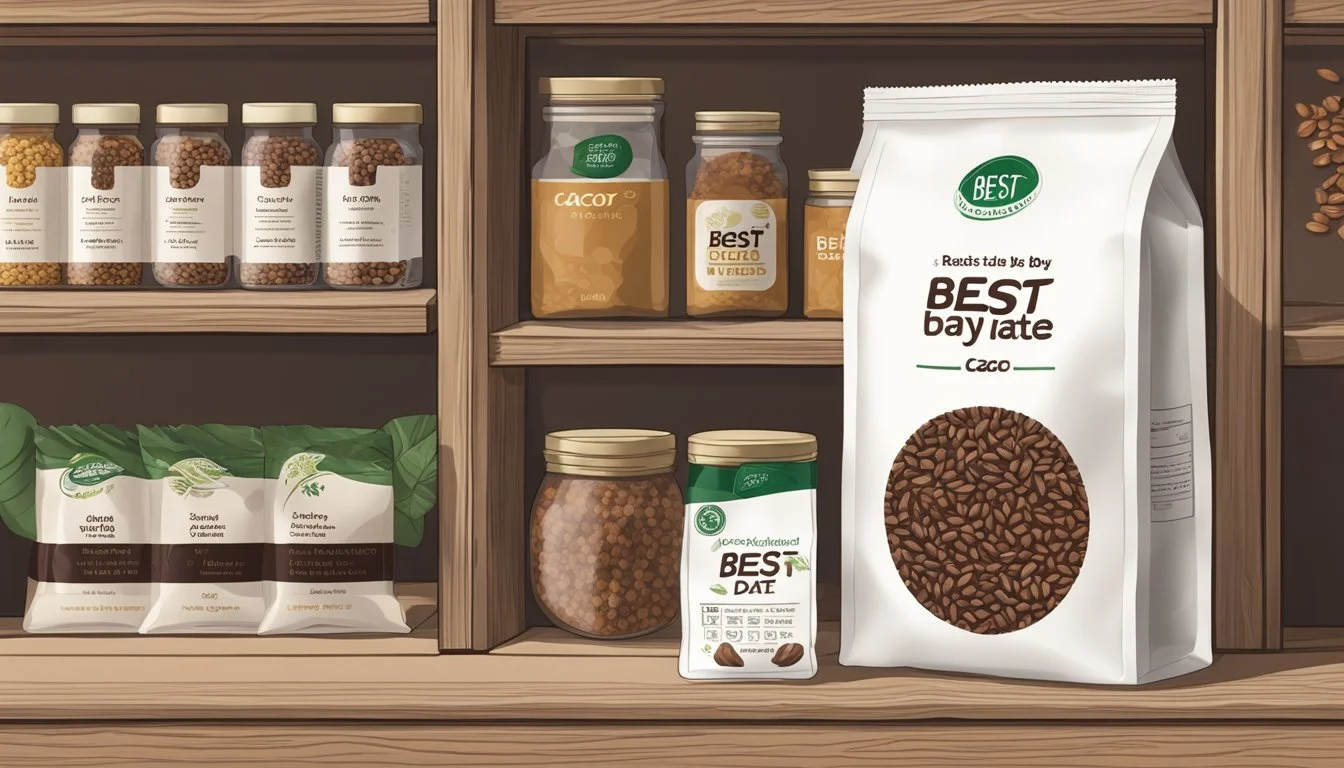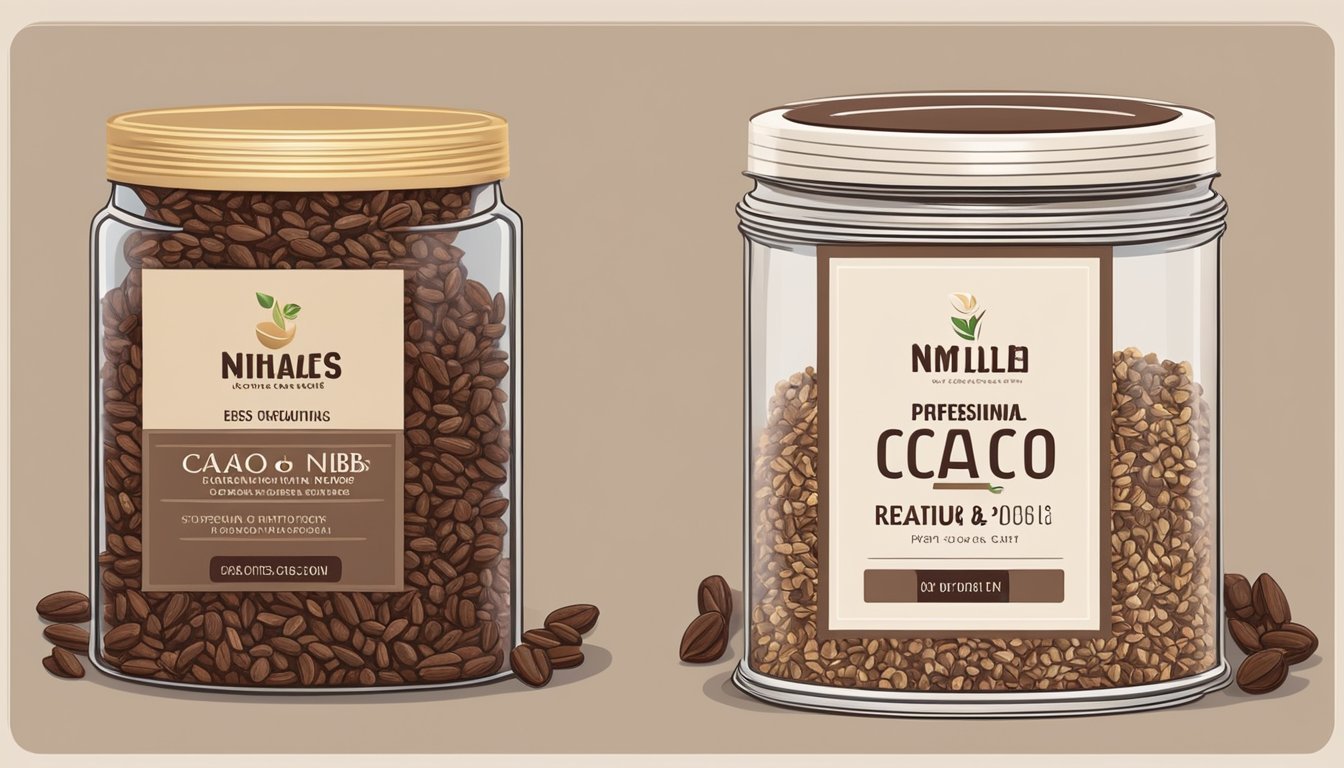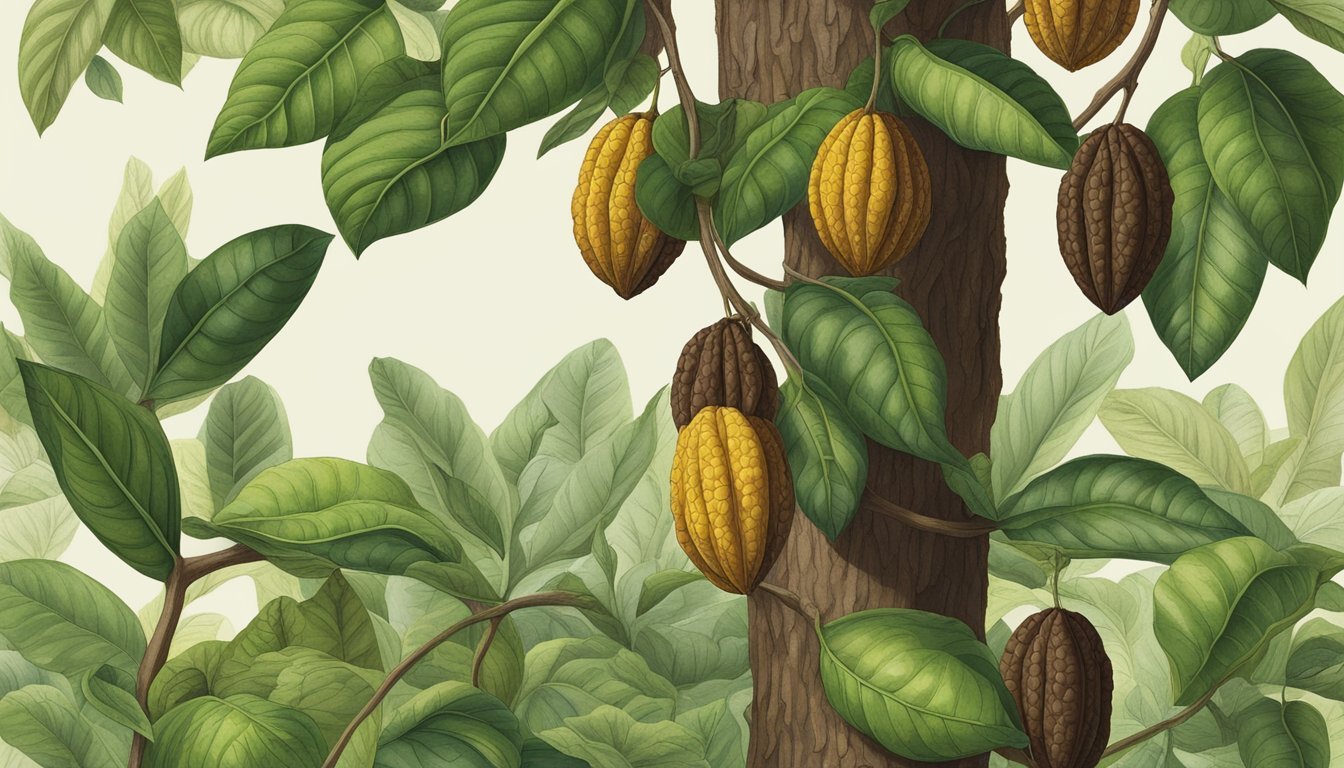How Long Do Cacao Nibs Last?
Shelf Life and Storage Tips
Cacao nibs, the crushed form of cocoa beans, are a remarkable superfood boasting an impressive nutritional profile. Rich in antioxidants, cacao nibs help combat oxidative stress by neutralizing free radicals, which are linked to a multitude of chronic diseases. Their health benefits extend further as they are a good source of iron, magnesium, and fiber – minerals and compounds essential for overall health. In addition to fiber, which aids digestive health, cacao nibs also contain protein, contributing to the maintenance and repair of body tissues.
Given their nutritive value, cacao nibs are often incorporated into a health-conscious individual’s diet, whether sprinkled over breakfast bowls, blended into smoothies, or used as a baking ingredient. As their popularity as a dietary addition grows, understanding the shelf life of cacao nibs becomes crucial for consumers looking to maintain their freshness and potency. When stored properly in an airtight container and kept in a cool, dry, and dark place, cacao nibs can preserve their quality for an extended period.
The longevity of cacao nibs is influenced by storage conditions – exposure to moisture, heat, or light can compromise their shelf life and diminish their health benefits. Unopened and properly stored, cacao nibs can last for up to two years without losing their nutritional qualities. Once opened, however, it's recommended to consume them within six to eight months to ensure they retain their flavor and health-promoting properties. Cacao nibs do not technically expire, but their quality can degrade over time if not stored correctly.
Understanding Cacao Nibs
Cacao nibs, derived from cacao beans, offer both rich flavor and substantial nutritional value. They are a product of careful processing and preserve a host of benefits in their more natural state.
Cacao Beans to Nibs Process
Cacao nibs begin as cacao beans, which are the seeds of the cacao tree. These beans undergo several steps before transforming into the nibs consumers enjoy. Initially, beans are fermented to develop flavor and reduce bitterness. Post-fermentation, the beans are dried to prevent mold and decrease acidity, a crucial step that affects the final taste. Finally, the beans are roasted; this not only deepens the flavor but also facilitates the removal of the outer shell, yielding the inner nibs. These nibs may be used as-is, or further processed into cacao powder or cacao butter. (how long does cacao butter last?)
Nutritional Profile
Raw cacao nibs are lauded for their robust nutritional profile. They are rich in antioxidants, minerals such as magnesium, iron, and zinc, and contain a significant amount of fat—primarily in the form of cocoa butter, the natural fat of the cacao bean. As a minimally processed food, they retain more of these nutrients compared to more refined chocolate (What wine goes well with chocolate?) products.
Nutrient Benefit Antioxidants Combat oxidative stress and may reduce inflammation. Magnesium Supports muscle and nerve function and energy production. Iron Essential for transporting oxygen in the blood. Zinc Aids in immune function and DNA synthesis.
Organic cacao nibs are available for those preferring products not treated with pesticides or synthetic fertilizers, offering a pure form of this rich ingredient. They can be incorporated into recipes or consumed directly, providing versatility along with their health benefits.
Storage Guidelines
Storing cacao nibs correctly is essential to maintain their quality and extend their shelf life. Below are specific guidelines detailing the ideal storage conditions and effective methods to enhance the longevity of cacao nibs.
Ideal Storage Conditions
Temperature and Humidity: Cacao nibs thrive in a cool and dry place where the temperature is consistent and the humidity is low. They should not be stored in locations where the temperature fluctuates excessively, as this can introduce moisture and lead to spoilage.
Light Exposure: Direct sunlight or any strong light can degrade the quality of cacao nibs. It is important to store them in a dark location to prevent the loss of flavor and nutritional value.
Methods to Extend Shelf Life
Airtight Containers: Using an airtight container such as a glass jar with a sealable lid is indispensable for keeping cacao nibs fresh. This prevents the ingress of moisture and other contaminants.
Freezing: For long-term storage, one can freeze cacao nibs to significantly prolong their shelf life. When freezing, ensure that the nibs are sealed in an airtight container or bag to prevent freezer burn and odor absorption.
Culinary Uses
Cacao nibs are versatile in the kitchen, known for their rich chocolate flavor minus the sweetness. They offer a satisfying crunch and a boost of cocoa essence, making them ideal for various culinary applications.
In Baked Goods and Desserts
Cacao nibs add a chocolatey depth to baked goods such as muffins, cookies, and brownies. Their robust flavor complements the sweetness of the batter, while providing a textural contrast. For desserts, they can be sprinkled on top of cakes, mixed into batter for homemade chocolate bark, or even incorporated into a ganache for an intense chocolate experience.
As a Healthy Snack Alternative
For health-conscious individuals, cacao nibs serve as a nutritious snack. They can be added to granola or trail mix for an antioxidant-rich addition. Homemade trail mix can combine cacao nibs with nuts (how long do nuts last?) and dried fruits (What wine goes well with dried fruits?) for a balanced snack. They can also be stirred into yogurt or oatmeal, providing a chocolate flavor without the guilt.
Creative Cooking Ideas
They enhance savory dishes with a subtle chocolate flavor, like a mole sauce. Smoothies can gain a new dimension with cacao nibs, adding a flavorful and nutrient-dense ingredient. Consider toasting them lightly to amplify their flavor before blending. Cacao nibs offer a unique touch as a topping on savory dishes too, like a finisher on a gourmet butternut squash (how long does butternut squash last?) soup or in a peppery arugula salad.
Sensory Profile
Cacao nibs provide a rich sensory experience, defined by their distinctive taste and aroma, as well as their texture and visual appeal. These characteristics are integral to evaluating the quality of the nibs.
Taste and Aroma Experience
Cacao nibs are renowned for their complex flavor profile. When one tastes cacao nibs, they encounter a bitter chocolate flavor that's significantly more intense than what's found in processed chocolate.
Flavor:
Primary: Bitter
Secondary: Nutty with subtle fruity notes
Aroma:
Rich and earthy
Hints of woodiness can be detected
Taste and aroma make cacao nibs a preferred choice for those seeking an authentic chocolate experience minus the sweetness of processed chocolate. The bitterness can be a surprise for first-timers, but it is a prized characteristic among connoisseurs.
Texture and Aesthetics
Cacao nibs offer a unique textural experience that distinguishes them from the silky smoothness of chocolate chips (how long do chocolate chips last?) or bars.
Texture:
Crunchy, similar to that of roasted coffee beans (how long do coffee beans last?)
Granular, as they are broken pieces of the cacao bean
Color:
Typically, a dark brown reminiscent of dark chocolate
The texture of cacao nibs is not just about the bite but also the mouthfeel. One may describe it as robust, with a satisfying crunch that's absent in more processed forms of chocolate. The aesthetics, specifically the deep color, signify the purity and intensity of the nibs, hinting at the unadulterated cacao experience they offer.
Common Questions
When it comes to the longevity and safety of cacao nibs, consumers often have specific inquiries. Addressing these concerns ensures proper storage and safe consumption.
Shelf Life Expectancy
Cacao nibs typically last for up to 2 years when stored unopened in optimal conditions. To maximize freshness and extend shelf life, it's crucial to keep them in an airtight container and place them in a cool, dry, and dark environment. The key variables affecting their longevity include temperature, exposure to light, and humidity. A stable climate with low moisture levels is ideal for preserving the quality of cacao nibs.
Safety and Spoilage Signs
Concerns about spoilage are valid, as cacao nibs can become rancid or contaminated with microorganisms. Signs that cacao nibs have spoiled include a sour smell, an off-taste, and the presence of mold. Before consuming cacao nibs, one should always check for these indicators to ensure they have not undergone undesirable fermentation or spoilage processes. If any signs of degradation are present, the cacao nibs should be discarded to prevent health risks.
Remember, appearance and smell are reliable indicators of the condition of cacao nibs. If in doubt, it's best to err on the side of caution and not consume the product.
Health and Nutritional Benefits
Incorporating cacao nibs into one's diet can confer a variety of health benefits mainly due to their high antioxidant content and presence of several vital nutrients.
Cacao Nibs in a Balanced Diet
Cacao nibs are celebrated for their rich nutrient profile which supports a balanced diet. They are an excellent source of antioxidants, specifically polyphenols, which help combat oxidative stress in the body. Each serving of cacao nibs contains a substantial amount of fiber and is relatively low in carbohydrates, providing a satiating snack with minimal impact on blood sugar levels. Furthermore, cacao nibs offer a decent dose of protein and healthful fats, contributing to a feeling of fullness and sustained energy release.
Fiber: Typically around 5 grams per serving
Protein: Roughly 3 grams per serving
Fat: Approximately 15 grams per serving
Potential Health Consequences
While the benefits of cacao nibs are notable, they should be consumed in moderation. These bits of pure cacao contain natural compounds that may affect blood pressure. Therefore, individuals with blood pressure concerns should consider this when adding cacao nibs to their diet. It is also critical to be aware of the calories in cacao nibs, as the fats — although healthful — contribute to their overall caloric content. Excessive consumption without accounting for these calories can lead to unintended weight gain.
Comparative Analysis of Raw Versus Roasted Cacao Nibs
In exploring the longevity of cacao nibs, one must consider the impact of roasting on their shelf life. This section delves into the nutritional differences and flavor and texture variances between raw and roasted cacao nibs.
Nutritional Differences
When comparing raw cacao nibs to roasted cacao nibs, one must account for the changes in nutrient content due to the roasting process. Raw cacao nibs retain a higher amount of antioxidants because they are not exposed to the high temperatures that can degrade sensitive compounds. The primary nutrients found in both raw and roasted cacao include minerals like magnesium and iron, as well as dietary fiber.
Raw Cacao Nibs: Higher antioxidant levels; undepleted vitamins
Roasted Cacao Nibs: Potential reduction in some nutrients due to heat exposure
Flavor and Texture Variances
The texture and flavor of cacao nibs are significantly altered through the act of roasting. While raw cacao nibs can be somewhat bitter and astringent, the roasting process enhances their chocolate flavor, making the end product more palatable for those accustomed to the taste of conventional chocolate.
Raw Cacao Nibs: More bitter, astringent
Roasted Cacao Nibs: Deeper, richer, and a more pronounced chocolate flavor
Roasting is also a critical processing technique that influences the final texture of chocolate products made from the cacao nibs. It serves to both amplify flavor and remove undesirable acidity, resulting in a smoother taste experience.
Historical and Cultural Significance
Cacao, from its origins to its modern culinary applications, has transformed from a sacred seed to a versatile ingredient in both sweet and savory dishes.
Origins of Cacao
The cacao tree, scientifically known as Theobroma cacao, carries a rich heritage dating back to as far as 1400 to 1500 BC within Mesoamerican cultures. The Olmec, one of the earliest known civilizations to consume cacao, prepared it as a beverage, laying groundwork for its cultural significance. It is a pivotal aspect of antiquity, evidencing the deep historical roots of chocolate in human civilization.
Cacao in Modern Cuisine
Today, cacao appears in a myriad of forms; from the raw cacao nibs treasured for their nutritional benefits to the foundation of milk and dark chocolate bars (how long do chocolate bars last?) enjoyed worldwide. In contemporary cuisine, chefs use cacao nibs to impart a rich flavor to both sweet desserts and savory dishes, demonstrating cacao's flexibility and enduring appeal in the culinary arts.










